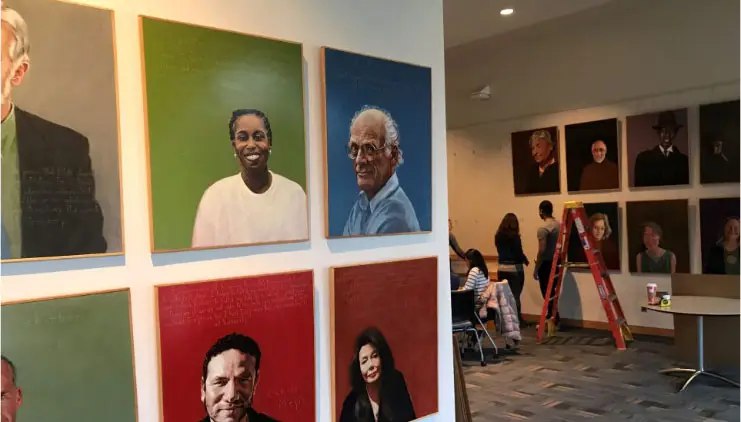
Ralph Ellison
Novelist and essayist : 1914—1994
“Consciousness and conscience are burdens imposed upon us by the American experiment. They are the American’s agony, but when he tries to live up to their stern demands they become his justification.”
Biography
Ralph Ellison, born in Oklahoma City, Oklahoma, played the trumpet in his school band beginning at age eight, and first thought he might be a musician. He won a scholarship to study composition at Tuskegee Institute in Alabama but, while there, began reading writers like Hemingway, T. S. Eliot, Gertrude Stein, and James Joyce. Especially inspired by Eliot’s poem “The Waste Land”, Ellison became interested in using the forms of modern literature to describe the daily life of American blacks.
When scholarship money ran out in his third year of college, Ellison moved to New York City and began living and working at the Harlem YMCA. Meeting the poet Langston Hughes and the French writer André Malraux had a great influence on him. Ellison also became friendly with another young, struggling writer named Richard Wright. Wright later helped Ellison get a job with the Federal Writer’s Project, where he spent time assembling a wealth of material on black folklore, games, and children’s rhymes.
During the last three years of World War II, Ellison served as a cook in the Merchant Marine. In his spare time aboard ship, he wrote short stories and the beginnings of a novel set in a prisoner of war camp. His novel changed form when, one day, he typed out the words, “I am an invisible man.” After seven years of work, his epic novel Invisible Man, the story of an anonymous black youth growing up in racist America, was published in 1952 to universal acclaim.
Ellison wrote dozens of essays describing the African-American experience, but his second novel was still unfinished when he died 42 years later. On the basis of his first novel, the writer won many honors including the National Book Award, election to the National Institute of Arts and Letters, and the Presidential Medal of Freedom. In 1965 a survey of 200 prominent literary figures judged Invisible Man “the most distinguished single work” published in America in the previous 20 years.
Programs
Americans Who Tell the Truth (AWTT) offers a variety of ways to engage with its portraits and portrait subjects. Host an exhibit, use our free lesson plans and educational programs, or engage with a member of the AWTT team or portrait subjects.

Education
AWTT has educational materials and lesson plans that ask students to grapple with truth, justice, and freedom.

Exhibits & Community Engagement
AWTT encourages community engagement programs and exhibits accompanied by public events that stimulate dialogue around citizenship, education, and activism.